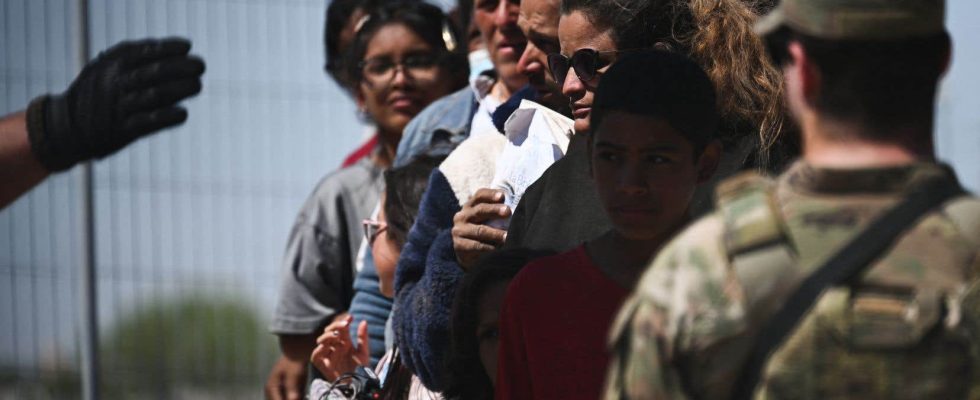The United States deployed more than 25,000 agents on the border with Mexico on Wednesday and adopted new restrictions on the right to asylum, before lifting a health measure which had blocked access to the country since the start of the pandemic.
Anticipating an influx of migrants at the gates of the country, Democratic President Joe Biden acknowledged Tuesday evening that the situation would be “chaotic” when the so-called “Title 42” device expires Thursday at 11:59 p.m. Washington time.
This rule, supposed to limit the spread of COVID-19, gave the American authorities the possibility of immediately turning back all migrants entering the country, including asylum seekers. In three years, it has been used 2.8 million times.
As its lifting approached, border towns such as Brownsville, Laredo and El Paso saw the arrival of many candidates for exile, mainly from Latin America, but also from China, Russia or Turkey.
In El Paso, hundreds of people sleep in the streets, protected from the sun by sheets or lying on boxes, while children beg. The mayor, Oscar Leeser, expects a wave of “12,000 to 15,000 people” at the end of the week.
To help local authorities, the government announced on Wednesday the deployment of “more than 24,000 officers and [membres des] law enforcement agencies, as well as more than 1,100 border police coordinators. This is without counting the 2500 soldiers already on the spot, to which will be added 1500 soldiers called in reinforcement by the Department of Defense.
Two to three times more flights
At the same time, the Departments of Justice and Homeland Security have finalized new restrictions on the right to asylum. Announced in February, they have been the subject of a mandatory consultation procedure and will come into force on Thursday evening.
Before presenting themselves at the border, asylum seekers, with the exception of unaccompanied minors, must now have obtained an appointment on a telephone application set up by the border guards, or have been refused access. asylum in one of the countries crossed during their migratory journey.
Otherwise, their request will be presumed illegitimate and they may be subject to an accelerated deportation procedure prohibiting them from entering American soil for five years.
The United States therefore plans to increase repatriation flights, which will double or triple for certain destinations. Some 7,000 additional places will be created in detention centres, so that migrants do not disappear in the country while awaiting the examination of their file.
To encourage legal channels for immigration, Washington has planned to eventually open a hundred “regional management centers” located outside the country, where the files of candidates for emigration will be studied. The first are planned in Colombia and Guatemala.
Anguish
These changes create great confusion among those who dream of the American Eldorado. “We don’t know what’s going on,” says Michel, a Venezuelan crossed by AFP in Ciudad Juárez, Mexico, some 300 meters from the border. “They’re not able to give us an option that would give us a good chance of getting in,” he said anxiously.
These new rules have been strongly criticized by associations for the defense of migrants, who accuse Joe Biden of carrying out a migration policy not so different from that of his predecessor Donald Trump.
The Republicans, wind up against the lifting of “Title 42”, on the other hand, are suing him for laxity, accusing him of having transformed the border into a “sieve”.
The 80-year-old president, who has just announced his candidacy for a second term in 2024, is trying to defuse these criticisms by engaging in a real balancing act, alternating messages of firmness and humanism.
Alongside the new restrictions, his government is granting 30,000 additional visas per month to nationals of Cuba, Venezuela, Guatemala and Haiti.
